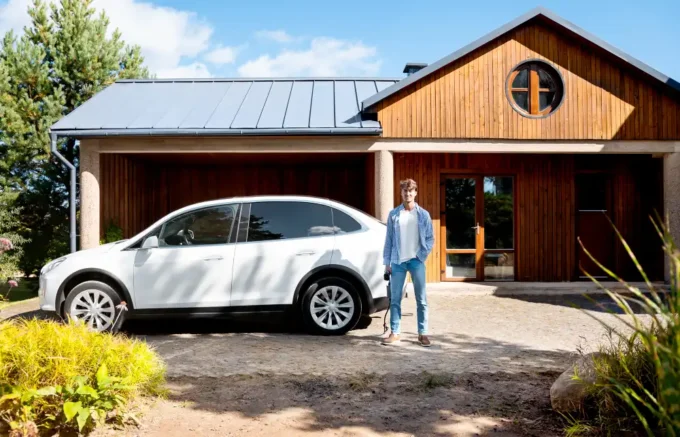Sustainability isn’t just a buzzword; it’s a necessity, and green architecture is leading the charge in reshaping how we build and live. As our world faces increasing environmental challenges, the way we design our spaces plays a pivotal role in reducing our carbon footprint and preserving resources for future generations.
Green architecture goes beyond aesthetics—it’s about creating buildings that harmonize with the environment while promoting energy efficiency, reducing waste, and enhancing well-being. By integrating renewable materials, innovative technologies, and eco-conscious designs, we’re not just constructing buildings; we’re building a sustainable future.
This movement isn’t limited to architects and designers; it’s a collective effort that impacts us all. From homes to skyscrapers, green architecture is transforming how we think about the spaces we inhabit. Together, we can embrace these practices and create a world where sustainability and innovation go hand in hand.

Understanding Green Architecture
Green architecture integrates sustainable practices into the design, construction, and operation of buildings. It focuses on minimizing environmental impact while enhancing the quality of life for occupants.
What Is Green Architecture?
Green architecture, also called sustainable architecture, involves designing buildings with minimal resource consumption and environmental disruption. These structures often utilize renewable energy systems, like solar panels, and environmentally friendly materials, such as reclaimed wood or recycled steel. By planning for energy efficiency, natural light optimization, and efficient water usage, this approach reduces a building’s ecological footprint.
- Energy Efficiency: Sustainable designs include energy-efficient systems like LED lighting, smart thermostats, and well-insulated building envelopes to reduce energy demand.
- Material Selection: Prioritizing eco-friendly materials involves using sustainable resources, like bamboo or non-toxic paints, which limit harm to the environment and human health.
- Water Conservation: Features such as rainwater harvesting systems, low-flow fixtures, and drought-resistant landscaping help reduce water usage.
- Indoor Environmental Quality: Attention to ventilation, non-toxic finishes, and daylight optimization promotes healthier indoor spaces.
- Site Responsiveness: Designs respect and integrate with their surroundings by preserving natural landscapes and adapting to local climates.
Benefits of Green Architecture
Green architecture offers numerous advantages, contributing to a sustainable future while addressing environmental, economic, and social challenges. Its wide range of benefits positively impacts both the planet and its inhabitants.
Environmental Advantages
Green architecture reduces resource consumption and lowers carbon footprints. By incorporating renewable energy sources like solar panels and wind turbines, buildings generate clean energy and minimize reliance on fossil fuels. Features such as green roofs and vertical gardens improve air quality and support biodiversity by creating habitats for plants and wildlife. Efficient water management systems, including greywater recycling and low-flow fixtures, reduce freshwater usage and limit wastewater production.
Economic Benefits
Sustainable buildings lower operational costs through energy and water savings. High-performance insulation, efficient HVAC systems, and energy-smart designs cut utility expenses, providing long-term savings. Using durable and locally sourced materials decreases maintenance costs and transportation expenses. According to the U.S. Green Building Council, green buildings can achieve up to 20% savings in overall energy costs annually. Additionally, these buildings often qualify for tax incentives, grants, or certifications, offering further financial rewards.
Enhanced Quality of Life
Green architecture enhances indoor environments, promoting occupant health and well-being. Natural lighting and ventilation designs improve air quality and reduce dependence on artificial lighting. Non-toxic building materials, such as low-VOC paints and adhesives, minimize exposure to harmful chemicals. Furthermore, access to green spaces increases mental health benefits, helping reduce stress levels and encourage physical activity. These elements create comfortable, productive living and working environments that prioritize human health.

Innovative Materials and Technologies in Green Architecture
Green architecture leverages advanced materials and technologies to maximize sustainability. These innovations reduce environmental impact, enhance building efficiency, and create healthier spaces.
Eco-Friendly Building Materials
Using sustainable materials minimizes resource depletion. Reclaimed wood, recycled steel, and bamboo offer durable, renewable alternatives for construction. Rammed earth and hempcrete provide natural insulation, reducing energy needs. Low-VOC (volatile organic compound) paints and finishes improve indoor air quality.
Renewable Energy Integration
Incorporating renewable energy systems reduces dependency on fossil fuels. Solar panels and wind turbines generate clean electricity, while geothermal systems provide efficient heating and cooling. Energy storage solutions like lithium-ion batteries optimize renewable energy usage by storing surplus power for later.
Smart Building Technologies
Smart systems improve energy management and building functionality. Automated lighting and HVAC systems adjust based on occupancy and temperature. IoT devices constantly monitor energy use, enabling real-time optimization. Green roofs equipped with sensors regulate temperature and water retention, promoting building efficiency.

Leading Examples of Green Architecture Projects
Green architecture showcases sustainability through innovative designs and communal efforts. Let’s explore some exemplary projects shaping a sustainable future.
Iconic Sustainable Building Designs
Green architecture has produced landmark projects that balance functionality and environmental stewardship.
- The Edge, Amsterdam: Recognized as one of the most sustainable office buildings globally, The Edge features smart lighting powered by solar panels, rainwater harvesting, and intelligent energy management systems.
- Bosco Verticale, Milan: These vertical forest towers combine high-density housing with lush vegetation, integrating over 800 trees and 20,000 plants to improve air quality and biodiversity.
- Pearl Academy, Jaipur: Designed for the extreme Rajasthan climate, this building uses passive cooling, open courtyards, and thermal massing, reducing energy demand significantly.
- One Central Park, Sydney: Known for its innovative heliostat and vertical gardens, this project optimizes natural light and minimizes energy use while enhancing green space accessibility for occupants.
These structures illustrate how architecture can harmonize aesthetic appeal and sustainability.
Community-Based Green Initiatives
Sustainable development extends beyond iconic buildings to include community-driven projects.
- Vauban Neighborhood, Germany: This district prioritizes energy-efficient housing, solar energy integration, and car-free zones, creating a self-sustaining community model.
- Mithun Housing, Seattle: The community housing project implements renewable materials, shared green spaces, and water reclamation systems to enhance environmental impact and foster social connectedness.
- CopenHill, Copenhagen: Beyond being a waste-to-energy plant, CopenHill features a recreational rooftop park, ski slope, and community-focused green space, merging functionality with public engagement.
- BedZED, London: The Beddington Zero Energy Development incorporates renewable energy, rainwater harvesting, and local materials, designed for low-impact communal living.
These initiatives ensure that sustainability becomes an inclusive movement, engaging communities in green practices.

The Road Ahead: Green Architecture’s Role in Sustainability
Green architecture continues to shape the future by addressing pressing environmental, economic, and social challenges. As the demand for sustainable solutions grows, innovative trends and individual actions play key roles in accelerating this transformation.
Future Trends in Green Design
Emerging trends in green design focus on innovative materials, technologies, and approaches that reduce environmental impact. Prefabricated building components, made from low-carbon materials like bio-concrete and cross-laminated timber, streamline construction while minimizing waste. Net-zero energy buildings, which generate as much energy as they consume through renewable sources like solar and wind, are becoming the standard for new constructions.
Decentralized water systems, like greywater recycling and localized rainwater harvesting, address water scarcity and reduce the strain on municipal supplies. In urban areas, biophilic design—incorporating green roofs, vertical gardens, and natural lighting—improves air quality and enhances biodiversity. Adaptive reuse projects, which repurpose existing structures for new functions, extend building lifespans and preserve cultural heritage.
How Individuals Can Contribute
Individuals play a crucial role in advancing green architecture through informed choices and advocacy. Embracing eco-friendly living practices, such as prioritizing homes with energy-efficient appliances, solar panels, and sustainable materials, generates demand for green designs. Supporting local businesses that offer sustainable construction materials, like bamboo flooring or recycled steel, enhances the supply chain for eco-conscious building.
Advocating for policy change, from participating in public consultations to supporting green-certified projects, impacts community-level adoption of eco-friendly practices. We can also educate ourselves and others about sustainable living by sharing insights on green architecture techniques, visiting environmentally-conscious spaces, and encouraging sustainable renovation projects.
Conclusion
Green architecture represents a transformative approach to addressing the environmental, economic, and social demands of our time. By integrating energy-efficient systems, eco-friendly materials, and innovative technologies, we can create buildings that reduce resource consumption and enhance occupant well-being. These design practices not only mitigate environmental harm but also offer long-term economic benefits, such as reduced operational costs and increased property value.
The collaborative effort of architects, developers, policymakers, and communities drives the success of this movement. Through education, financial incentives, and supportive regulations, we can overcome the challenges of cost and awareness, making sustainable designs more accessible. The adoption of trends like prefabrication, net-zero energy, and decentralized systems paves the way for a greener future, illustrating the potential for scalable, impactful change. Embracing green architecture ensures that sustainability becomes an integral part of our built environments, promoting harmony between humanity and nature.














Leave a comment